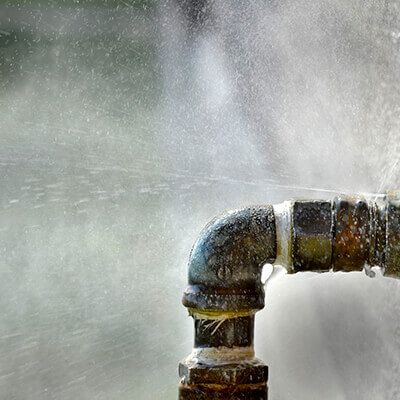How to Prevent Floods in Your Home with Smart Water Shutoffs
Flooding is a homeowner’s worst nightmare. A professional plumber installing a smart water shutoff can give you peace of mind, knowing your home is protected from flooding. Safeguard your floor, cabinetry, drywall, and personal belongings and furniture. Let’s discuss smart water shutoffs and how they can prevent flooding in your home.
What Is a Smart Water Shutoff?
A smart water shutoff is a device that automatically detects leaks in different areas of a property. A professional plumber can install this device at essential points in your home’s water pipe system. This shutoff device provides information regarding your home’s current water pressure, average usage, and additional information you can use to monitor your home’s plumbing.
Six Ways a Smart Water Shutoff Prevents Flooding
Here are some ways a smart water shutoff prevents flooding in your home or business.
1. Leak Alerts and Leak Detection
Smart water shutoffs give you leak detection alerts in real-time. The sensors on this device detect high pressure, freezing water, and running water. If the shutoff valve detects a leak, you will immediately receive an alert via the smartphone app, e-mail, or phone call. If you fail to respond, it will automatically shut off the water.
2. Automatic Shutoff Feature
If the shutoff device detects a leak, it will automatically shut off your home’s water supply to prevent further damage. Because of this device’s rapid response, you can reduce the devastating effects of leaks, helping to prevent flooding. There is also a standby mode that can be used to disable automatic shutdowns, useful for when you need us to work on your plumbing system.
3. Remote Control Access
Remote control access allows you to control the shutoff device while away from home. If a leak occurs while you’re at work or on vacation, you can quickly shut off the water and prevent flooding and other damage.
4. Smart Integration
Smart water shutoffs can integrate with other smart devices, such as smart appliances, providing comprehensive home protection. You can link smart devices together, which can be beneficial in multiple ways. For instance, if the shutoff device detects a leak in the basement, it can shut off the water, and the other devices can send information on that specific area of the home.
5. Analytics and Data
As time passes, the smart water shutoff device will collect data on water usage and overall system performance. You can use this data to identify potential issues and trends that can lead to flooding in the future. Knowing various trends gives you time to call a professional plumber before the situation escalates.
6. Preventive Maintenance
Some smart water shut-off devices have advanced features that allow them to monitor and determine the overall health of your water system. This advanced device can monitor the water pressure levels and usage patterns. Using this information, if the shutoff device detects anything unusual, you’ll receive a notification about the situation, giving you time to contact a professional plumber to address the issue.
Benefits of Having a Smart Water Shutoff
Smart water shutoff devices provide other benefits besides giving you peace of mind. You can add remote sensors to the devices to detect leaks in multiple areas of your home and connect them to other smart devices. These smart devices work with Alexa, Google Home, and others. Smart water shutoff devices have a built-in program that recognizes the habits of your water line and frequently checks for microscopic leaks. This technology provides more accurate information about your water system.
What Are the Common Causes of Home Flooding?
There are different causes of home flooding, including:
- Foundation damage
- Poor drainage
- Malfunctioning rain gutters
- Broken pipes
- Faulty appliances
Types of Smart Water Shutoffs
There are two types of smart water shutoffs: whole-house and point-of-use devices. The best shutoff for your home depends on its plumbing system. Whole-house smart water shutoff devices are typically automatic, and professional plumbers install them along your home’s main water line. When this system detects excessive water, the home’s water supply is shut off. Point-of-use shutoff devices, like whole-house smart water shutoffs, are automatic. Plumbers often install these devices with different appliances, such as dishwashers and refrigerator ice makers.
How Does an Automatic Shutoff Device Work?
A smart water shutoff’s primary function is to detect water leaks. Once a professional plumber installs the shutoff device on your home’s main water line, the device uses sensors to collect data about your household’s water usage. This equipment monitors your home’s water flow, allowing it to detect unusual water consumption. For extra protection and convenience, you can connect this smart device to your home’s Wi-Fi to create an entire smart system network with other smart devices you may have to alert you when there’s a malfunction.
What Is the Life Expectancy of Smart Water Shutoffs?
On average, a smart shutoff device can last at least 10 years. With proper maintenance, this equipment can last as long as 25 years. We have experience installing smart water shutoffs, protecting homes, and giving you and others who purchase smart water shutoffs one fewer thing to worry about. If you already have a smart water shutoff device, we’ll inspect it to ensure it’s working correctly.
Why Are Home Insurance Companies Starting To Require Smart Water Shutoffs?
Home insurance companies are requiring homeowners to have smart water shutoff devices to avoid paying large sums of money in water damage claims. Almost 25% of claims are related to water damage. The aftermath of water damage can be devastating and expensive. Since these smart devices detect leaks and other plumbing malfunctions, you can avoid costly repairs, and home insurance companies can avoid high settlement claims.
How Can Smart Water Shutoff Devices Add Value to Your Home?
Smart water shutoff devices can increase the value of your home by preventing leaks and saving you money with its sensors. This leak-detection technology protects your home from costly damage, making it a major consideration for home buyers. Many home buyers are looking for a home with updates, such as smart appliances, including smart water shutoffs. With this protection, home buyers are more likely to consider purchasing your home instead of a house without smart appliances.
We Can Help Install Smart Water Shutoffs in Your Sacramento Home
At Crystal Blue Plumbing Heating and Air, we take pride in providing HVAC and plumbing services, like automatic shutoff valves, to Sacramento, CA, and the surrounding areas. Whether you have a heating, air conditioning, or plumbing problem, we’re your local plumbers and HVAC technicians ready to do the job right. We guarantee the highest quality materials, installation, repair, maintenance, and customer service.
We’ve been the one-stop shop for home improvements in the Sacramento area for over 40 years and will continue providing excellent service. Our goal is to ensure your satisfaction with our services and give you less to worry about. Contact Crystal Blue Plumbing Heating and Air today to learn more about our plumbing and HVAC services.








